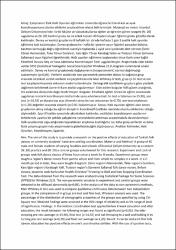| dc.contributor.author | İnalkaç, Oktay | |
| dc.date.accessioned | 2018-12-05T13:45:44Z | |
| dc.date.available | 2018-12-05T13:45:44Z | |
| dc.date.issued | 2016 | |
| dc.identifier.uri | https://hdl.handle.net/11363/144 | |
| dc.description | 13.07.2019 tarihine kadar kullanımı yazar tarafından kısıtlanmıştır.
Danışman: Rasim Kale | en_US |
| dc.description.abstract | Amaç: Çalışmamız Türk Halk Oyunları eğitiminin üniversite öğrencilerinin el-kol ve ayak koordinasyonuna olumlu etkilerini araştırabilme olarak belirlenmiştir. Materyal ve metot: İstanbul Gelişim Üniversitesi'nde; farklı fakülte ve yüksekokullarda eğitim ve öğrenim gören rastgele (N: 20) uygulama ve (N: 20) kontrol grubu kız ve erkek toplam 40 kişiden oluşan öğrenci grubu gönüllü olarak katılmıştır. Deney ve kontrol gruplarına 8 haftalık bir sürede haftada 1 gün 3 saatlik halk oyunları eğitimine tabi tutulmuştur. Deney grubuna her hafta bir yörenin oyun figürleri parçadan bütüne, basitten karmaşığa doğru öğretilmek suretiyle toplamda 2 aylık süre içerisinde dört yörenin (İzmir Yöresi Harmandalı, Teke Yöresi Cemilem, Kars-Iğdır Yöresi Karabağ Yallısı ve Trabzon Yöresi Sürmene Sallaması) oyun figürleri öğretilmiştir. Halk oyunları eğitimine başlamadan önce Karlsruher Sağlık Yönelimli Duvara Atış ve Yana Adımlama Koordinasyon Testi uygulatılmıştır. Araştırmada elde edilen veriler SPSS (Statistical Packagefor Social Sciences) for Windows 22.0 programı kullanılarak analiz edilmiştir. Deney ve kontrol gruplarında değişkenlerin (nonparametrik) normal dağılmadığı saptanmıştır (p<0,05). Verilerin analizinde non-parametrik yöntemler olarak iki bağımsız grup arasında niceliksel sürekli verilerin karşılaştırılmasında Man Whitney-U testi, grup içi ön test ve son test karşılaştırılmasında wilcoxon analizi kullanılmıştır. Demografik özelliklerin gruplara göre yüzdelik dağılımını belirlemek üzere Ki-Kare analizi uygulanmıştır. Elde edilen bulgular %95 güven aralığında, %5 anlamlılık düzeyinde değerlendirilmiştir. Bulgular: 8 haftalık eğitim öncesi ile eğitim sonrasında uygulanan motorik koordinasyon testlerinde yana adımlama testi ön test ortalaması (x=15,90), son test (x=16,55) ve duvara top atıp dönerek tutma ön test ortalaması (x=0,70), son test ortalaması (x=1,20) değerleri arasında anlamlı (p<0.01) bulunmuştur. Sonuç: Halk oyunları eğitimi alan deney gruplarının almış olduğu bu eğitim bireylerin koordinatif özellikler üzerinde olumlu etkilerinin olduğu söylenebilir. Sportif testler sayesinde aktivitelere katılımlar, vestibüler koordinasyon yapılarının birbirleriyle uyumlu bir şekilde çalışabilme yeteneklerini arttırması araştırmalarla desteklenmiştir. Halk oyunlarında olgu azlığından kaynaklanan araştırma kısıtlılığımız ise daha geniş serilerde ve daha fazla çalışma gruplarında araştırmalarla giderilebileceğini düşünüyoruz. Anahtar Kelimeler; Halk Oyunları, Koordinasyon, Egzersiz. | en_US |
| dc.description.abstract | Aim: The aim of this study is to provide a research on the positive effects of education of Turkish folk dances on university students' hand-arm and leg coordination. Material and Method: A group of 40 male and female students of varying faculties and schools of İstanbul Gelişim University as a random (N: 20) practice and (N: 20) a control groups volunteered for this research. Experiment and control groups took folk dance classes of three hours once a week for 8 weeks. Experiment groups were taught a region's dance moves from part to whole and from simple to complex in a week. In a 2-month period in total, they were taught 4 regions' (İzmir region's Harmandalı, Teke region's Cemilem, Kars-Iğdır region's Karabagh Yalli, Trabzon region's Sürmene Sallama) folk dance moves. Before classes, students took Karlsruher Health-Oriented Throwing to Wall and Side Stepping Coordination Test. The data obtained from the research were analyzed using Statistical Package for Social Sciences (SPPSS) for Windows 22.0. The non-parametric variables in experiment and control groups were detected to be diffused abnormally (p<0.05). In the analysis of the data as non-parametric methods, Man Whitney-U test was used to compare qualitative continuous data between two independent groups. In the comparison of in-group pre-test and final test, Wilcoxon analysis was used. The percentage of the distribution of demographic properties of the groups was specified by using Chi-Square test Obtained findings were assessed in the 95% range of reliability and as 5% range of level of significance. Findings: In the motoric coordination test applied before 8 week education and after education, the result between the following ranges was found as significant (p<0.01): the side-stepping pre-test average (x=15,90), final test (x=16,55) and ball throwing to a wall and holding it by turning pre-test average (x=0,70) and final test average (x=1,20). Result: It can be deduced that folk dances education has positive effects on one's coordinative abilities. With the use of sportive tests, such activities have been proved to increase the ability of working coordinately of the vestibular coordinative structures together. The problem of limited phenomena in folk dances, causing limited research can be tackled with doing researches in large series and with more activity groups. Key Words: Folk Dances, Coordination, Exercise. | en_US |
| dc.language.iso | tur | en_US |
| dc.publisher | İstanbul Gelişim Üniversitesi Sağlık Bilimleri Enstitüsü | en_US |
| dc.rights | info:eu-repo/semantics/openAccess | en_US |
| dc.subject | Research Subject Categories::SOCIAL SCIENCES::Social sciences::Education | en_US |
| dc.title | 8 Haftalık Türk Halk Oyunları Eğitiminin Üniversite Öğrencilerinin El-Kol ve Ayak Koordinasyonuna Etkisinin İncelenmesi | en_US |
| dc.title.alternative | Research of Effect to the Hand- Arm and Leg Coordination of University Students of Turkish Folk Dance For 8 Weeks | en_US |
| dc.type | masterThesis | en_US |
| dc.relation.publicationcategory | Tez | en_US |

















